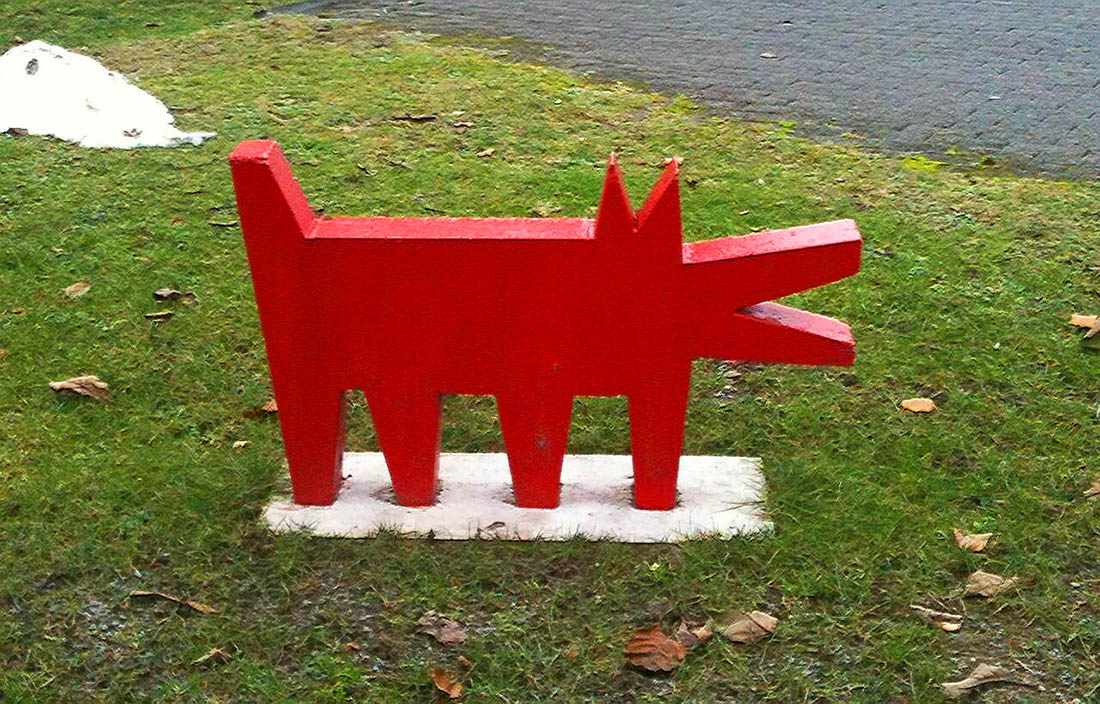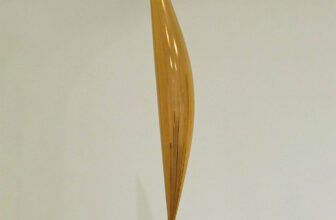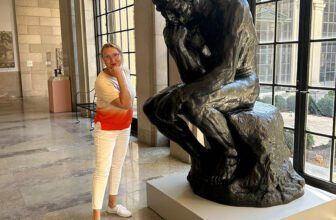
Most Famous Keith Haring Sculptures
In the heart of 1980s New York City, pulsing with graffiti, subway trains screeching through underground tunnels, and the rebellious hum of a cultural revolution, Keith Haring’s figures began to move. They weren’t just drawings. They danced, twisted, reached, and embraced. These bold lines came alive in a way that no other artist’s work did. But Haring’s art didn’t remain on paper or subway walls for long. It grew. It stretched into space. It became sculpture.
This is the story of how Keith Haring, one of the most iconic artists of the 20th century, transformed his unmistakable visual language into three-dimensional form, the legacy of his most famous sculptures, how they’re valued today, and where in the world they now live.
Keith Haring: A Radical Vision of Line and Motion
Born in 1958 in Reading, Pennsylvania, Keith Haring had an early interest in cartooning, which would inform his entire visual career. Inspired by Dr. Seuss, Walt Disney, and the bold lines of comic books, Haring developed a style that was deceptively simple: thick black lines, energetic motion, and human figures rendered as radiant, anonymous icons.
After moving to New York City in 1978 to attend the School of Visual Arts (SVA), Haring immersed himself in the gritty, thriving street art scene. Unlike many traditional artists, he rejected galleries at first and instead used the subway system as his canvas, chalk drawings on empty black advertising panels. He called these spaces “accessible galleries.”
But Keith Haring’s vision was never confined to two dimensions. As his reputation exploded globally, he started exploring ways to bring his forms into space, to make them touchable, monumental, and permanent.
Sculpting the Invisible Line
To understand Keith Haring’s sculpture is to understand the kinetic energy behind every line he drew. He once said, “My drawings don’t try to imitate life; they try to create life, to invent life.” His sculptures, then, are life-in-motion.
Haring began creating sculptures in the early 1980s, translating his drawings into cut-outs, metal reliefs, and large-scale public installations. The method was surprisingly direct, yet conceptually bold.
How Did Keith Haring Make Art Sculptures?
Drawing Comes First: Every sculpture Haring made began as a drawing. He would sketch directly onto paper or canvas, figures dancing, dogs barking, babies crawling, bodies embracing. These were more than doodles; they were blueprints for motion.
From Line to Steel: With his unique forms drawn out, Haring would often trace them onto sheets of aluminum or steel. He worked with fabricators and welders who cut and shaped these forms based on his designs. Haring was hands-on in this process, ensuring the sculptures retained the organic spontaneity of his original line work.
Bold Colors: Many sculptures were painted with the bright, primary colors that defined Haring’s palette: reds, yellows, blues, and blacks. Even in monochrome works, his lines maintained a vibrancy that seemed to radiate from within.
Scale Matters: Haring played with scale, producing both tabletop sculptures and towering public works. Regardless of size, each piece pulsed with the same energy as his subway art.
One of the remarkable features of Haring’s sculpture is its sense of movement. A dog mid-bark, a figure leaping, a pyramid of people, his sculptures often feel like freeze-frames of dance or protest, celebration or resistance.
Most Famous Keith Haring Sculptures
While many of Keith Haring’s sculptures are beloved worldwide, a few have become truly iconic. These works define his sculptural legacy and continue to influence generations of artists.
1. “Untitled (Three Dancing Figures)” – 1989
Perhaps the most famous of his sculptural works, this piece features three stylized human figures, arms upraised, seemingly caught in a moment of pure joy. Each figure is a different color, typically red, yellow, and blue, symbolizing diversity and unity. The sculpture is often interpreted as a celebration of life, movement, and community.
One of the most prominent versions is installed at City Hall Park in San Francisco. It has become a beloved public artwork, representing the city’s inclusive spirit and artistic heart.
2. “Boxers” – 1987
Two red figures square off, fists raised, their heads exploding in radiating energy lines. “Boxers” is a powerful commentary on conflict and duality, created during a time when Haring was increasingly politicized by the AIDS crisis, apartheid, and global injustice.
Installed in Berlin, “Boxers” stands as a symbol of resilience and struggle, a visual echo of the divided city it inhabits.
3. “The Box” (also known as “The Life of Christ”) – 1990
Completed shortly before his death, this bronze sculpture consists of 13 panels depicting scenes from the life of Jesus, rendered in Haring’s unmistakable style. It is spiritual, poignant, and deeply personal. This work is displayed in several locations, including St. John the Divine Cathedral in New York City.
4. “Totem” – 1989
A 30-foot high sculpture featuring stacked figures, “Totem” feels like a modern-day obelisk, a monument to human connection. Located in Greenwich Village, this sculpture acts as a beacon, a celebration of collective strength and unity.
5. “Figure Balancing on Dog” – 1989
This whimsical, joyful sculpture captures one of Haring’s favorite motifs: a human figure standing or balancing atop his iconic barking dog. It exudes playfulness and balance, common themes in his later work.
How Much Are Keith Haring’s Sculptures Worth?
As of 2025, Keith Haring’s sculptures are among the most coveted pieces in contemporary art auctions. His untimely death in 1990 at the age of 31 has made his works even more treasured, given the relatively limited number of sculptures he completed during his lifetime.
Auction Prices and Valuations:
Small to Mid-Sized Sculptures (under 2 meters tall): These often sell for $500,000 to $2 million, depending on the piece’s provenance, condition, and rarity.
Large Public Sculptures: Monumental pieces have reached $4 to $6 million or more at private sales or auctions, particularly those with exhibition history.
In 2021, Haring’s “Untitled (Three Dancing Figures)” sold at Christie’s for $5.8 million, a testament to the growing market for his 3D works.
Even posthumous castings, officially authorized by the Keith Haring Foundation, can fetch six-figure prices when sold by reputable galleries.
As with many iconic artists, Haring’s market continues to rise steadily. The combination of visual accessibility, cultural relevance, and historical importance makes his sculptures both emotionally and financially valuable.
Where Are Keith Haring’s Sculptures Located?
Keith Haring believed in art for all. His sculptures, like his street art, were intended to be public, inclusive, and impactful. Today, you can find his works installed in cities, museums, and parks around the world.
United States
San Francisco, CA – Three Dancing Figures, City Hall Park
New York City, NY – Totem, Greenwich Village; Life of Christ, St. John the Divine Cathedral
Chicago, IL – Figure with Heart, part of the Art Institute of Chicago’s modern collection
Miami, FL – The Barking Dog, installed at the Margulies Collection
Europe
Berlin, Germany – Boxers, installed near Potsdamer Platz
Paris, France – Tower of Figures, part of the Centre Pompidou’s rotating exhibitions
Barcelona, Spain – The Human Pyramid, featured during temporary public sculpture festivals
Asia and Oceania
Seoul, South Korea – Haring’s works are part of the permanent collection at the Dongdaemun Design Plaza
Tokyo, Japan – Keith Haring Museum in Yamanashi features multiple sculptures and installations, in a dedicated museum designed by architect Atsushi Kitagawara
Melbourne, Australia – Select sculptures displayed at the National Gallery of Victoria and during outdoor festivals
Keith Haring’s Legacy and Influence
Keith Haring died on February 16, 1990, from AIDS-related complications. But his art never stopped moving. His sculptures, vivid, joyful, and defiant, have become permanent fixtures in the story of global contemporary art.
In a world grappling with issues of inequality, division, and healing, Haring’s forms continue to speak. They leap off pedestals. They march in parades. They balance, twist, fight, and embrace. And above all, they remind us of a radical idea: that art belongs to everyone.
Through the Keith Haring Foundation, established before his death, his sculptures are preserved, exhibited, and replicated around the world. The foundation supports AIDS research, children’s programs, and the preservation of his artistic legacy.
A Line That Lives On
Keith Haring was a prophet of visual language. He spoke in lines that breathed, danced, and touched. His sculptures, whether in steel, bronze, or aluminum, carry the same pulse as his subway chalk drawings: raw, accessible, and unforgettably human.
In cities across the world, his figures still stand: arms open, hearts radiant, bodies in motion. More than just art objects, Keith Haring’s sculptures are declarations of life, etched not in marble, but in joy, urgency, and love.
And they’re still dancing.




